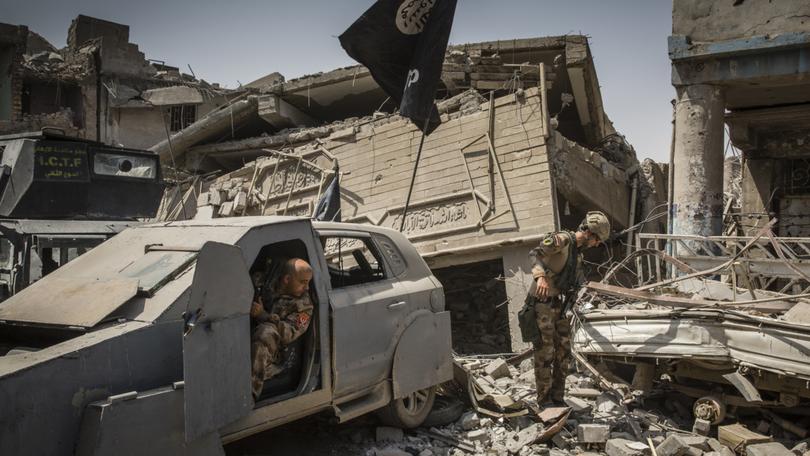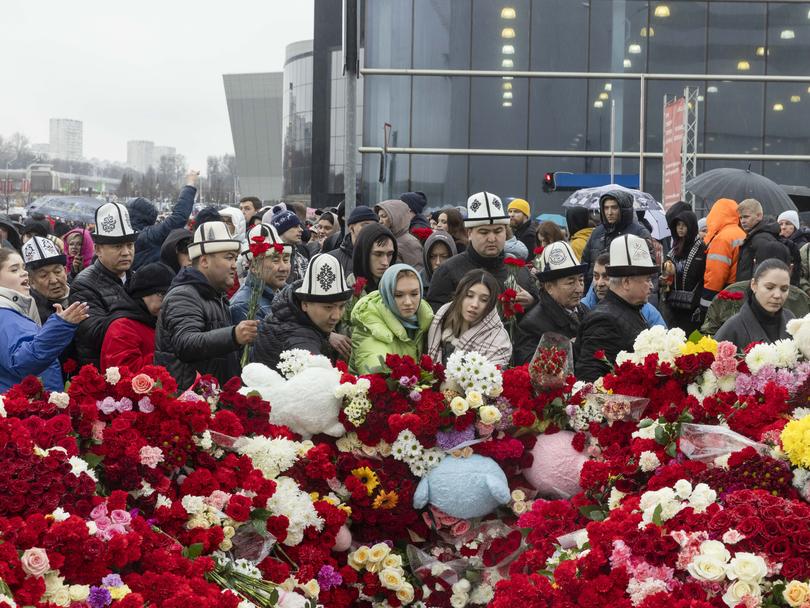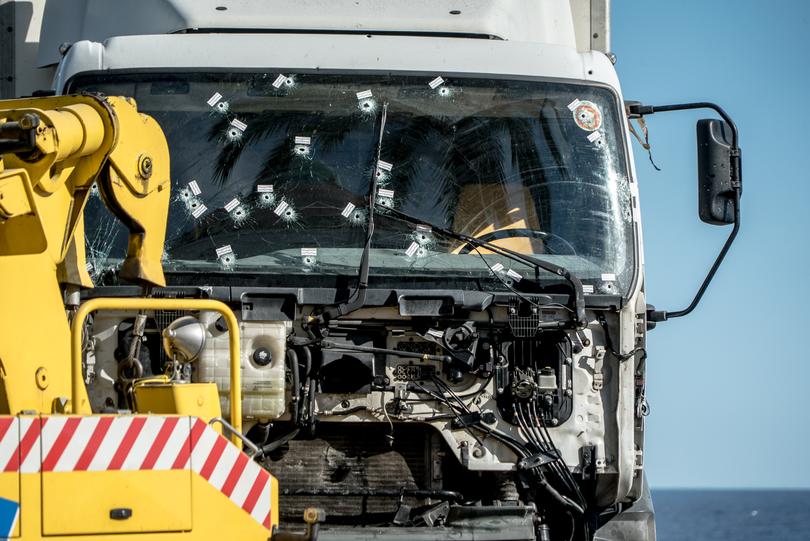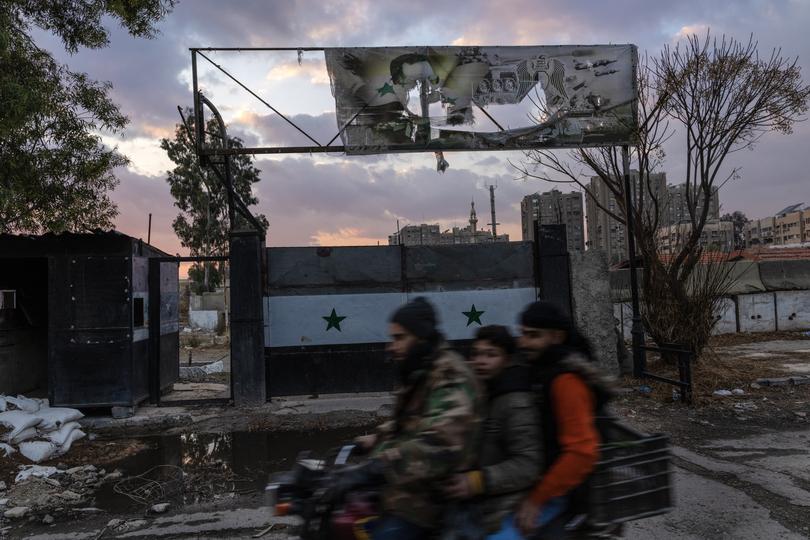THE NEW YORK TIMES: What to know about the Islamic State’s acts of terror

A 42-year-old Texas man rammed a pickup into New Year’s revelers on Bourbon Street in New Orleans early Wednesday, killing 15 people. He had an Islamic State group flag in his truck, the FBI said.
The terrorist group, also known as ISIS, has left a brutal legacy of death and destruction across the world. Although the group no longer controls significant territory in the Middle East, it has continued to launch terror attacks around the world and inspire believers of its extreme ideology to carry out atrocities of their own.
Law enforcement officials said Wednesday that they were trying to determine the suspect’s potential associations and affiliations with terrorist organizations. Counterterrorism specialists pointed to several telltale signs.
Sign up to The Nightly's newsletters.
Get the first look at the digital newspaper, curated daily stories and breaking headlines delivered to your inbox.
By continuing you agree to our Terms and Privacy Policy.“By carrying an ISIS flag with him during the attack, the suspect wanted to show that he was a true believer, aligned with the ISIS cause, and perhaps hoping to trigger others into following suit,” said Colin P. Clarke, a counterterrorism analyst at the Soufan Group, a security consulting firm based in New York.
History
The Islamic State is a Sunni Muslim insurgent group that traces its origins to al-Qaida in Iraq, which nearly pushed Iraq into civil war before it was defeated by local militias and U.S. troops.
Fighters from the group rebranded as the Islamic State by 2013. Under the leadership of Abu Bakr al-Baghdadi, they exploited the instability from Syria’s civil war to seize territory. In 2014, the group seized Mosul, Iraq’s second-largest city, and declared itself a caliphate — a state governed by Islamic principles.
In the spring and summer of 2014, the group took control of cities across Iraq and Syria, gaining notoriety for kidnappings, sexual enslavement and public executions. It also orchestrated and inspired a series of terrorist attacks across Europe.
In October 2019, President Donald Trump announced the killing of al-Baghdadi, saying in a speech that he was “the founder and leader of ISIS, the most ruthless and violent terror organization anywhere in the world.” Trump went on to say, “We obliterated his caliphate, 100%, in March of this year.”
U.S.-allied Kurdish rebels seized the last remnants of Islamic State territory.
Today, experts say the group is the weakest it has ever been in Iraq, but shows signs of resurgence in Syria. ISIS has continued to propagate its radical ideology through clandestine cells and regional affiliates across the globe.
Recent Attacks
Even though they no longer hold major swaths of territory, the Islamic State and its affiliates have carried out a spate of deadly attacks over the last year.
— In January 2024, the group’s Afghanistan affiliate, known as Islamic State Khorasan, carried out twin bombings in Iran at a memorial procession for Qassem Soleimani, a top Iranian general who was killed in a U.S. drone strike four years earlier. More than 80 people were killed and scores were injured.
— A few months later, U.S. officials blamed the Afghan group for a deadly concert hall attack near Moscow that killed at least 137 people.

— In July, the Islamic State claimed responsibility for a shooting in Oman that killed six people and injured around 30 more near a mosque.
The Iran and Oman attacks specifically targeted Shiite Muslims, who the Sunni-linked Islamic State considers to be apostates.
Directed, Enabled and Inspired
Counterterrorism officials have divided Islamic State attacks into three broad categories:
Directed: At least five successful attacks in the 2010s are known to have been directed outright by the Islamic State, carried out by operatives who trained with the group in Iraq and Syria.
These cases were among the deadliest, including the coordinated attacks in Paris in November 2015, which killed 130 people, and the airport and subway bombings in Brussels in March 2016, which claimed 32 lives. Yet these remain the minority.
Enabled: Counterterrorism experts have also identified violence conceived and guided by Islamic State operatives whose only connection to the attacker is through the internet.
In Paris in 2015, Amedy Coulibaly was in contact with Islamic State operatives in Syria before storming a kosher supermarket, taking hostages and killing four of them. And in Texas in 2015, two men initially thought to be “lone wolves” opened fire at a community center. The FBI later said the attackers were in communication with the Islamic State via encrypted texts.
Inspired: Finally, there are the so-called lone wolf attackers, who are radicalized through online propaganda and carry out attacks on their own.
In 2016 in Nice, France, more than 80 people were killed and hundreds injured in when a man drove a 19-ton truck through a packed crowd watching Bastille Day fireworks. The Islamic State claimed responsibility, although investigators said the driver had been self-radicalized, with no evidence linking him directly to the terrorist group.

In London in 2017, a 52-year-old Briton plowed a rented Hyundai sport utility vehicle through pedestrians on the Westminster Bridge, killing two and injuring at least 40. A day later, the Islamic State described him as a disciple and a hero for the assault carried out in the shadow of Big Ben, but no evidence emerged of a direct link.
The Islamic State in Syria and Iraq
The 2024 ouster of President Bashar Assad in Syria has given way to fears that the group could regain a foothold in the region. In July, the Pentagon warned that Islamic State attacks in Iraq and Syria were on track to reach double last year’s count.
The demise of the Assad regime has also led to conflict between U.S.-backed Kurdish forces and Turkish-backed rebels, prompting concerns that ISIS may exploit the instability.
More than 9,000 Islamic State fighters are housed in more than 20 facilities throughout Syria, according to the U.S. military, which has 2,000 American troops in the country and 2,500 in Iraq.
While Syria is in flux, the United States has continued to target the group’s fighters and camps with airstrikes.

Regional Reach
The terrorist group’s Afghanistan affiliate has been responsible for some of the recent large-scale terror attacks. It is also fighting Afghanistan’s Taliban government, which Islamic State Khorasan deems insufficiently strict.
A U.S. official said last March that the Taliban had made some progress against the Afghan group but struggled to prevent attacks and dismantle urban cells.
U.S. officials have also been monitoring the group’s growth in the politically unstable African Sahel region. Last March, the Islamic State claimed an attack on Niger’s army that reportedly killed 30 soldiers.
An estimated 60% of Islamic State propaganda comes from sub-Saharan Africa, particularly affiliate groups in Nigeria, Congo and Mozambique, a U.S. official said in March.
This article originally appeared in The New York Times.
© 2025 The New York Times Company
Originally published on The New York Times
